![Director of National Parks [logo]](/images/dnp_90px.gif)


![Director of National Parks [logo]](/images/dnp_90px.gif) |
 |
 |
Optimising storage temperature of seed to control dormancy and allow flexibility in planting time and synchronise germination
Temperature during storage is a well-known determinant of dormancy in many grass species, and in some species different genetic lines may show different responses (Simpson, 1990). Commonly loss of dormancy is positively correlated with increasing temperature, but physiological mechanisms also exist which require periods of low temperature to break dormancy. There may also be interactions with moisture content of the seed. If temperature conditions do influence the duration of dormancy and these effects can be quantified then storage under known conditions will allow some prediction of germinability and be a useful management tool.
Dry seed of 7 species has been stored at 3 temperatures (4, 10 or 15 and 20° C) in sealed containers. All species were stored with their seed coats intact. For some species the seed coat was removed for germination testing.
Bare seed was used for germination testing. At 6 months of storage (Fig. 4a) the best germination was from seed stored at 20° C. Germination was both faster and more successful than at the lower temperatures. After 16 months of storage (Fig. 4b) the lower temperatures gave faster germination though the eventual % germination was adequate at all temperatures. By 28 months (Fig. 4c) the seed stored at 10-15° C germinated most rapidly, but there was ca. 100% germination of seed from all 3 temperatures within 7-15 days from imbibing. These results suggest that there is a ripening effect that is influenced by temperature but it may not be particularly important for success because germination is always adequate. However, the ripest seed will establish more quickly, reducing predation and utilise available soil moisture more efficiently.
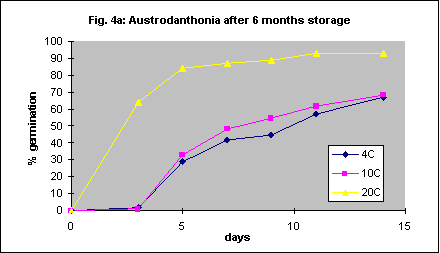
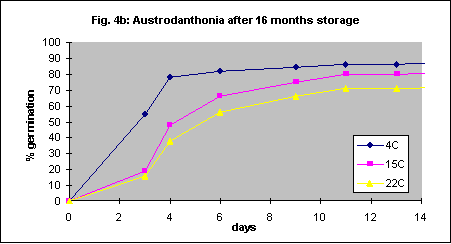
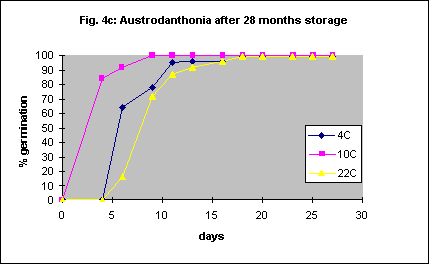
Awns were cut short for this species but the seed coats were left intact. At six months the results were similar to Austrodanthonia caespitosa, with storage at 20° C giving the fastest and most successful germination. Unlike Austrodanthonia caespitosa after storage of 16 months at all temperatures most seeds were dormant and only about 20% were germinable. However, by 26 months most seed was germinable especially after storage at the higher temperatures (Figs. 5a-c).
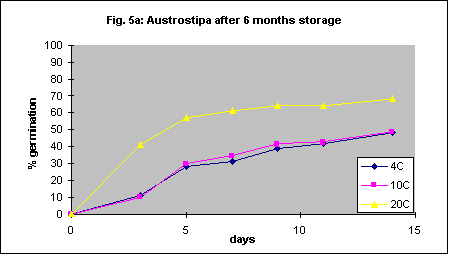
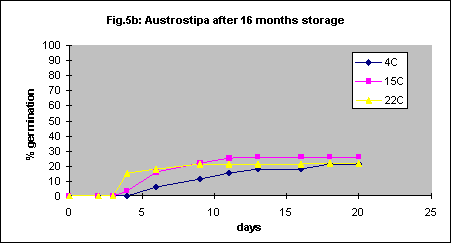

Bare seed was used for this species. Bothriochloa macra is easily and quickly germinated regardless of storage temperature and exhibits no dormancy (Figs. 6a-c).
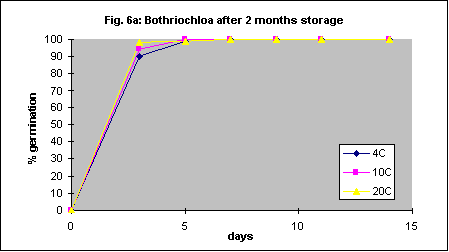

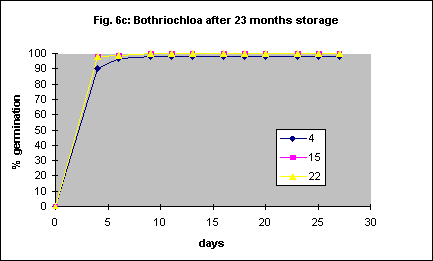
.
Bare seed was used. This species is similar in response to Bothriochloa macra. Germination is both rapid and successful regardless of storage temperature and the age of the seed had no effect (Figs.7a-c).
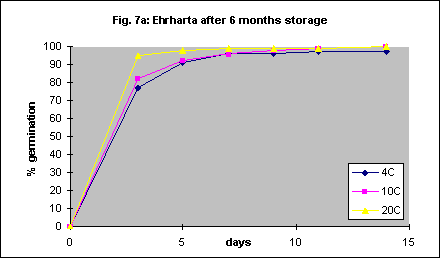
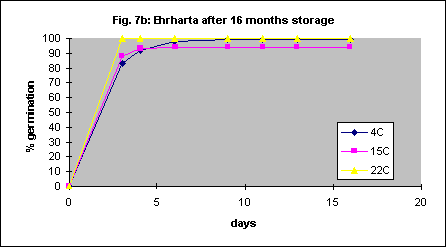
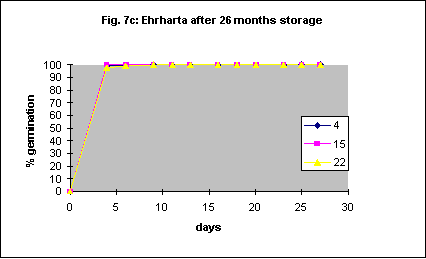
Bare seed was used. Storage at 20° C gave the best results after 5 months, as germination was faster. There was some reduction in germinability with age, but 20° C remained the best storage temperature. The rate of germination in 15-month-old seed was reduced at all temperatures, but rose again at 25 months a similar response to that of Austrostipa scabra (Figs.8a-b).
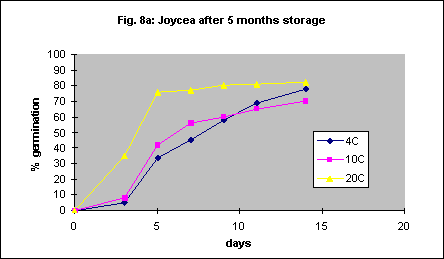
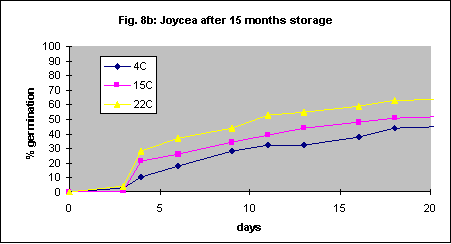
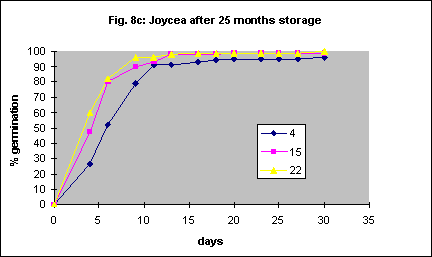
Only 4% of fresh intact seed germinated after 33 days. Even after storage for 14 months maximum germination (seed coats left on) was still only 4% at 4° C, 2% at 10° C and 0% at 20° C. However, by 23 months seed stored at all temperatures was 100% germinable (Fig.9). Maximum germination was reached in about 20 days, but seed coat removal reduced this to about 7 days (see below).
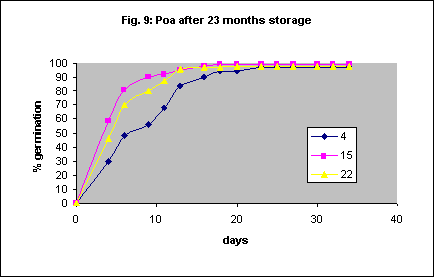
Germination rates are highly variable for different provenances of this species which leads to confusion and conflicting claims from people who try to use it for revegetation. For these experiments awns were removed but the seed coats were left intact. Seed from this particular source germinated very slowly and the overall germination was only 30% when the seed was 5 months old. Seed stored for 15 months failed to germinate at all. Seed kept at room temperature gave 30% germination after 23 months storage, suggesting a very slow ripening process.
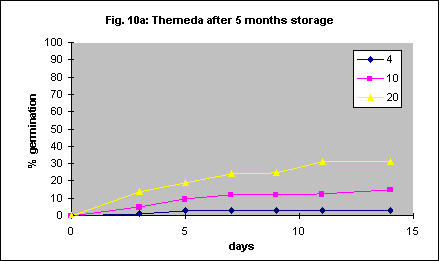
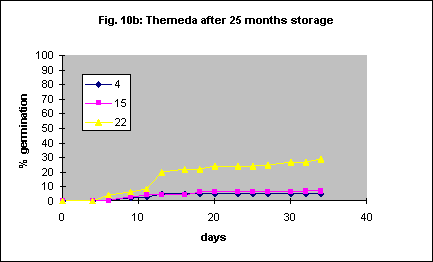
[ NEXT PAGE ]